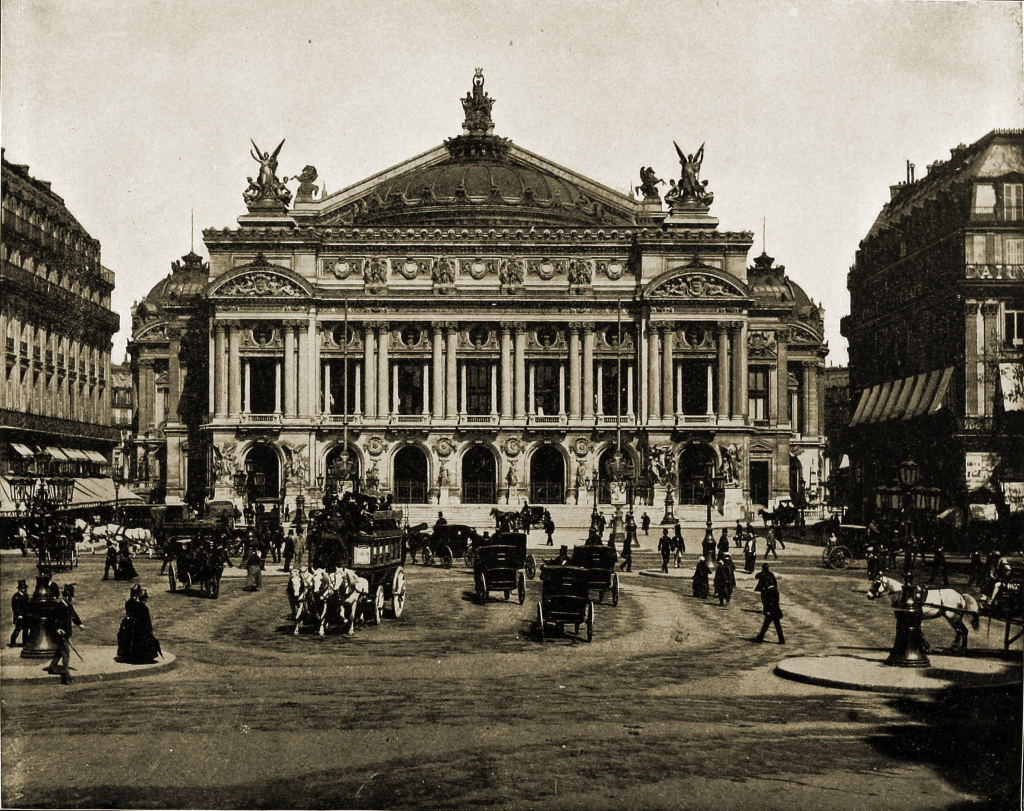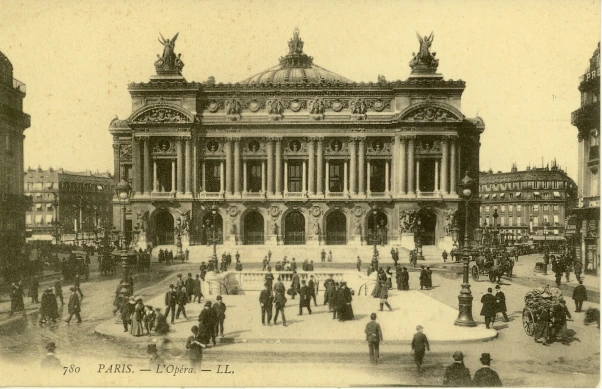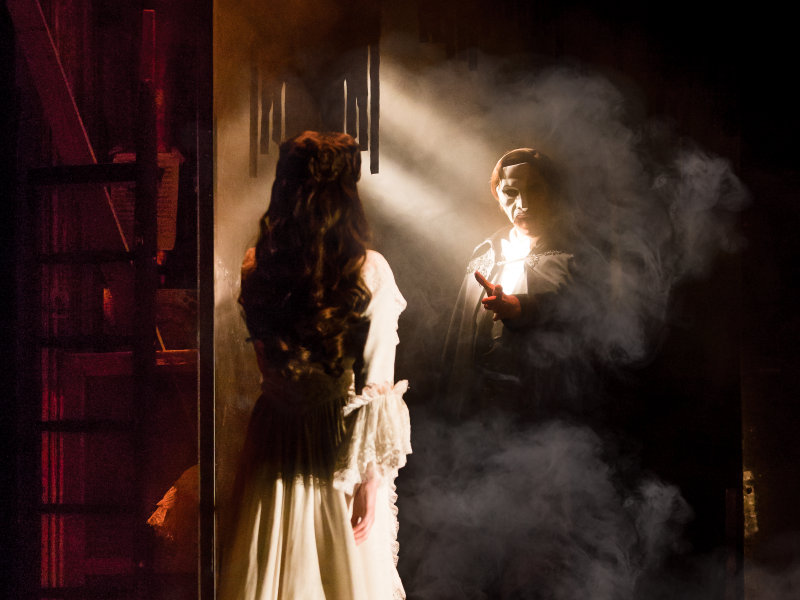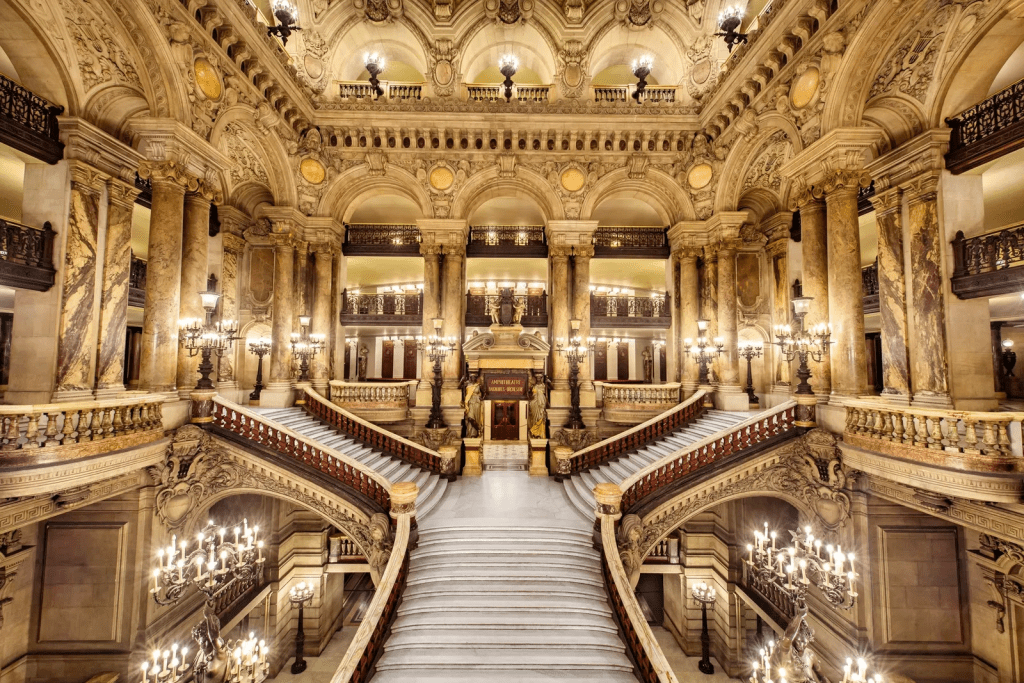For over a century, The Phantom of the Opera has captivated audiences with its tragic romance, haunting melodies, and eerie underground lairs. But what many fans of the story don’t realize is that the iconic tale isn’t entirely a product of fiction. Behind Gaston Leroux’s gothic novel lies a chilling layer of truth a dark past rooted in the real-life Palais Garnier, better known as the Paris Opera House.
Completed in 1875, the Paris Opera House is one of the grandest architectural wonders in Europe. Its glittering chandeliers, sweeping staircases, and lavishly adorned ceilings make it a monument to opulence. But beneath the surface lies something far more mysterious: strange noises, unexplained accidents, and even whispers of a man living within its walls. These unsettling stories, combined with Leroux’s journalistic curiosity, helped birth one of the most enduring gothic tales of all time.

A Building Born in Mystery
The Paris Opera House was commissioned by Emperor Napoleon III and designed by architect Charles Garnier as part of a grand redesign of Paris. It took nearly 15 years to complete and was constructed over a labyrinth of tunnels, vaults, and an underground lake a feature that would later inspire the Phantom’s watery lair.

During construction, engineers struggled with constant flooding. No matter how much water they pumped out, it would return, making the foundation incredibly difficult to stabilize. Eventually, the builders decided to work with the water instead of against it, creating a permanent underground reservoir to balance the pressure. This subterranean lake became one of the most iconic and eerie parts of the novel and it still exists today.
Video: The Real Phantom of the Opera – Facts behind the Fiction
Real-Life Tragedies and Mysterious Events
The eerie atmosphere of the opera house wasn’t just limited to its design. In 1896, a tragic accident occurred that shocked Paris. During a performance, one of the grand chandeliers in the main hall fell from the ceiling, killing a concierge and injuring others. The bizarre nature of the event especially in a building so symbolic of perfection fueled rumors of a curse or ghost haunting the opera.
Reports of whispers in empty hallways, shadowy figures seen near backstage passages, and phantom-like moans coming from below the stage added to the lore. Staff members occasionally spoke of feeling watched or of catching glimpses of someone disappearing around corners.
Leroux, a former crime reporter with a fascination for the macabre, investigated these claims while researching the opera house. What he uncovered helped form the spine of his 1910 novel Le Fantôme de l’Opéra.

The Man in the Walls
One of the most persistent real-life rumors was that of a man secretly living inside the opera house. This tale was based, in part, on archival whispers and Leroux’s claim that the opera’s extensive network of passages and trapdoors could be navigated by someone who knew them intimately.
While the idea of a masked genius lurking beneath the opera may be embellished, the architecture of the Palais Garnier does allow for hidden movement between levels. There are trapdoors, hidden balconies, and narrow service corridors throughout the structure. For someone familiar with its layout, it wouldn’t have been impossible to vanish between performances or dwell unnoticed beneath the stage.
Video:
Movie Couples Therapy: The Phantom of the Opera
Fact and Fiction Collide
Leroux’s novel was published in serial form, blending historical fact with gothic imagination. Though the main character Erik, the disfigured genius known as the Phantom is fictional, the world he inhabits is frighteningly real.
The book’s success eventually led to numerous stage adaptations, including Andrew Lloyd Webber’s 1986 musical, which became one of the most successful theater productions in history. But even as millions fall in love with the tragic tale of Christine and her masked admirer, few realize how deeply it’s rooted in the actual shadows of a very real place.

Conclusion: The Phantom Still Lingers
The Paris Opera House remains one of the most beautiful and mysterious buildings in the world. Visitors today can still take guided tours through its grand halls and some even request to see the fabled underground lake. While no one has confirmed the existence of a Phantom, the unsettling beauty of the Palais Garnier leaves a lasting impression.
The legacy of The Phantom of the Opera lives on not just in novels and musicals, but in the dark corners of the opera house itself, where truth and legend continue to intertwine, and where the echoes of strange footsteps may still be heard if you listen closely.



